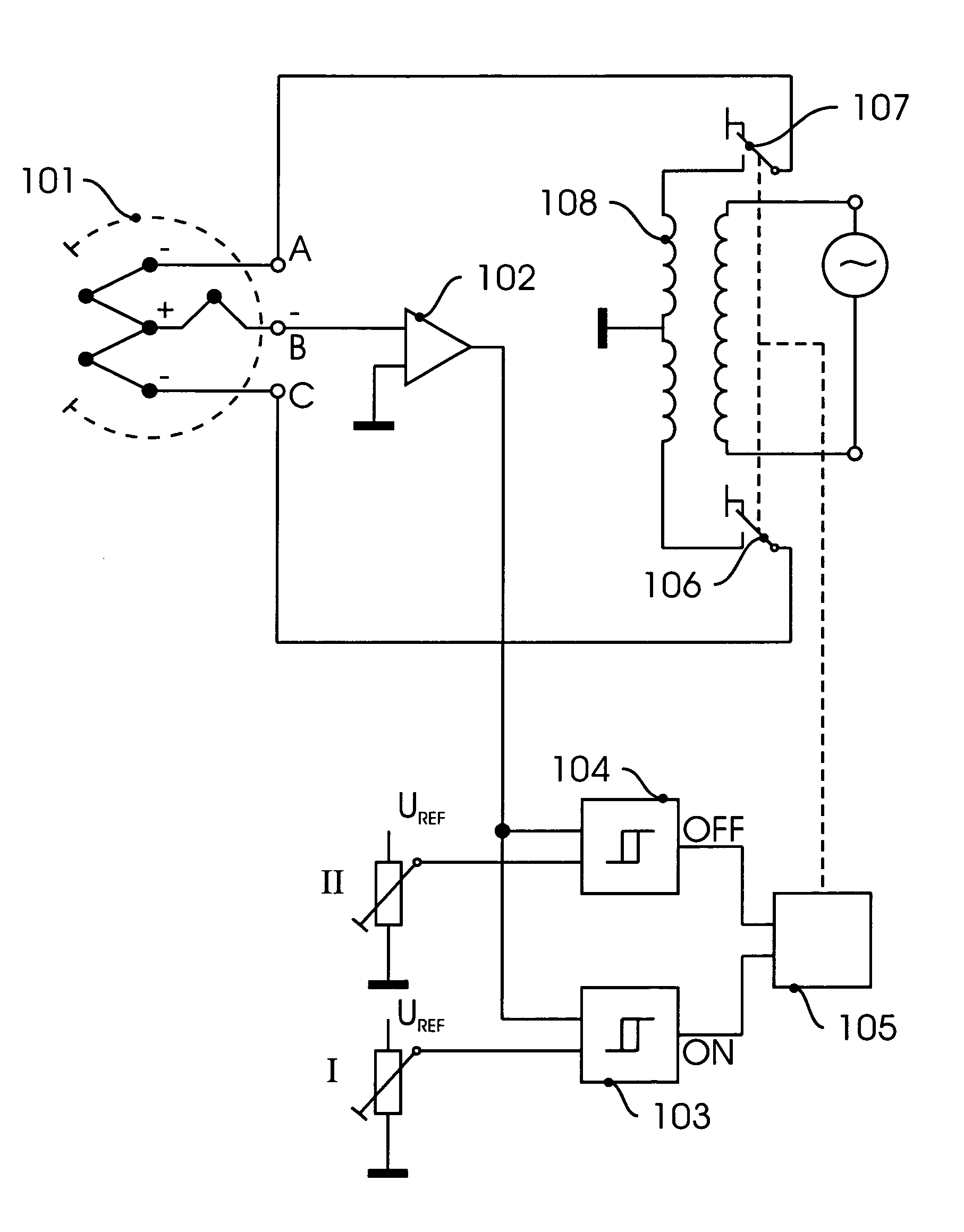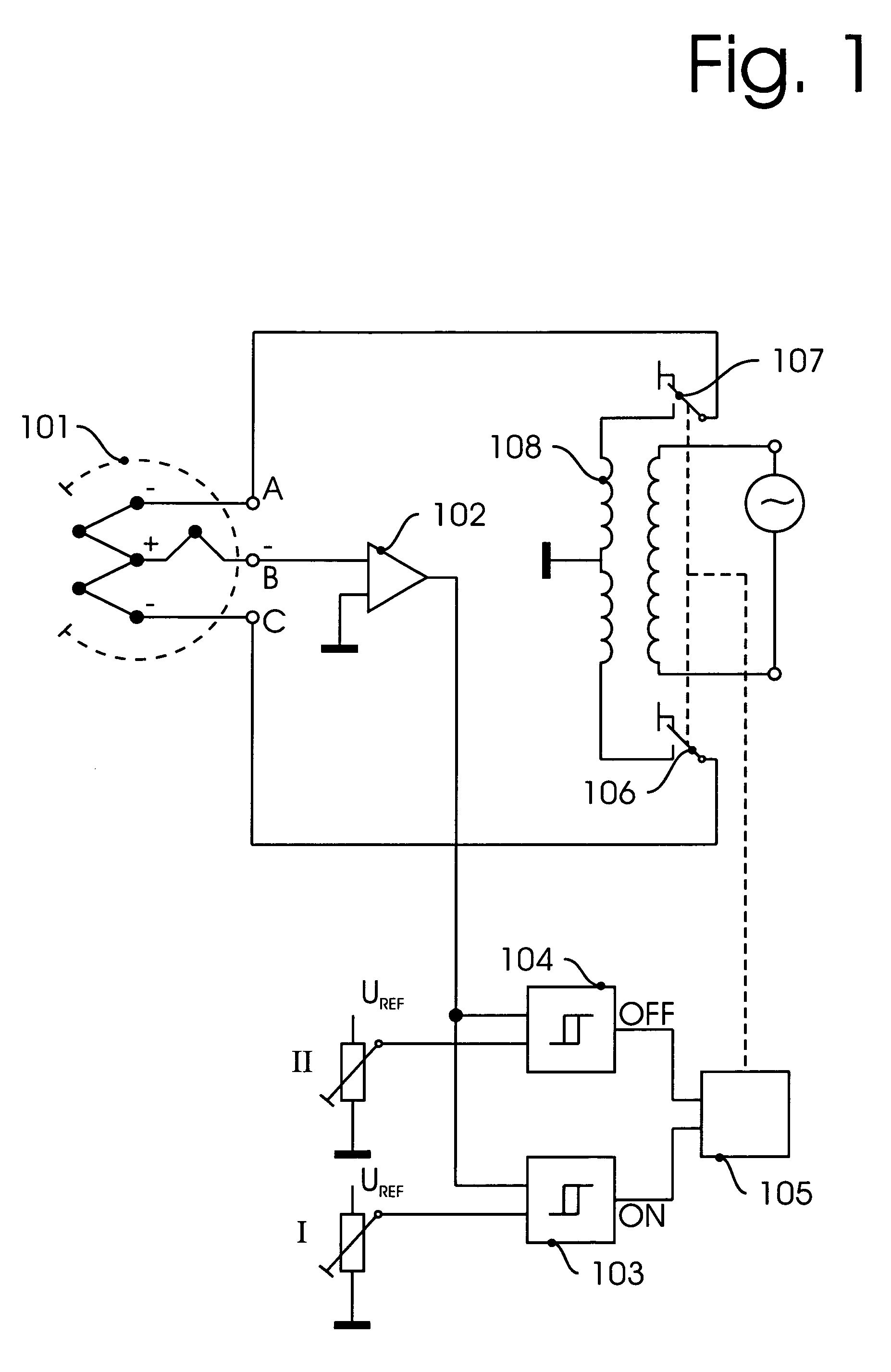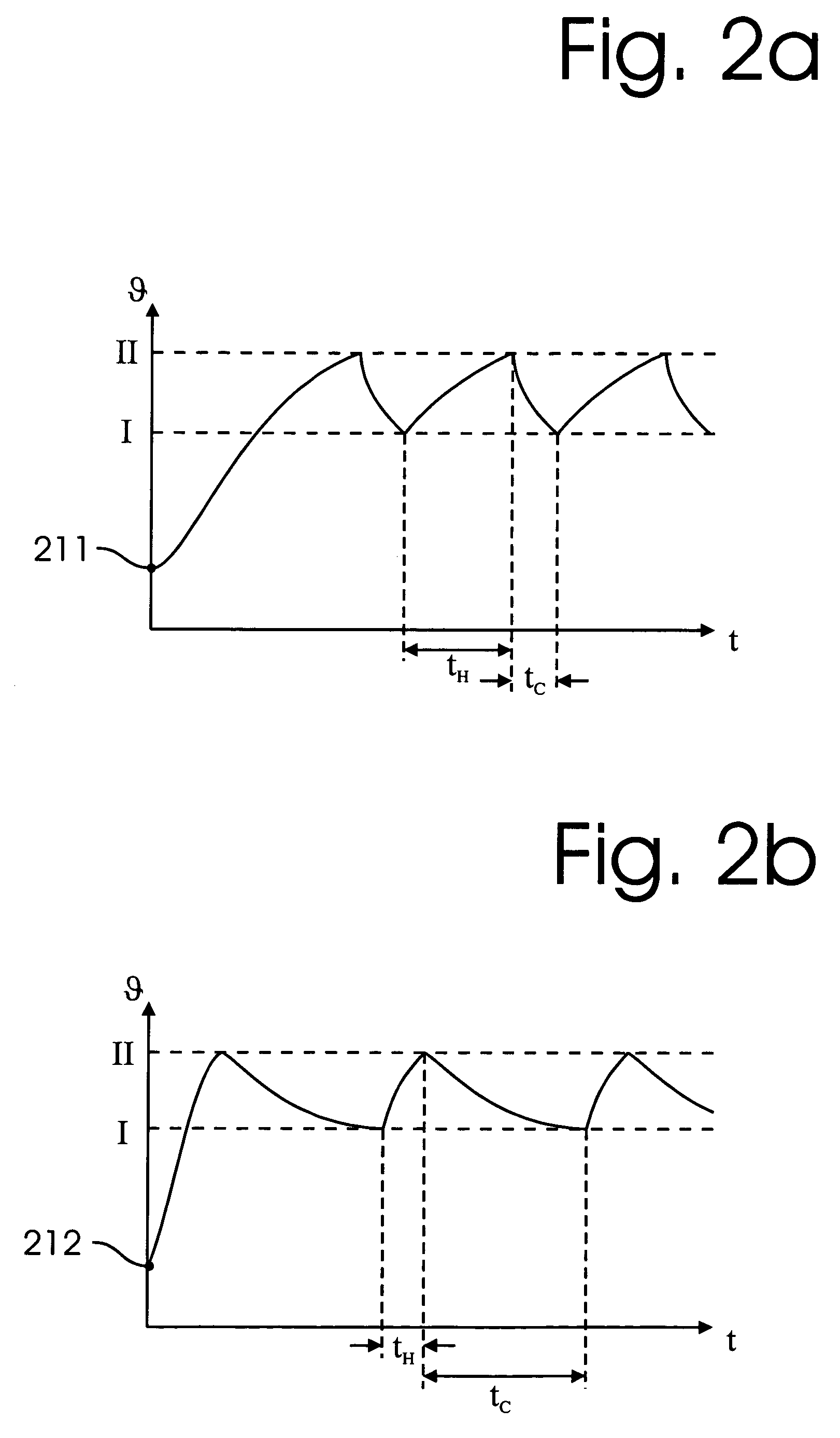Thermocouple vacuum gauge
a vacuum gauge and thermocouple technology, applied in the direction of thermometers, instruments, material thermal analysis, etc., can solve the problems of affecting the cooling time, the operation method cannot be used within a relatively small pressure measurement range, and the cooling time is not evaluated
- Summary
- Abstract
- Description
- Claims
- Application Information
AI Technical Summary
Benefits of technology
Problems solved by technology
Method used
Image
Examples
Embodiment Construction
Referring to FIG. 1, a block diagram of an exemplary system in which the principles of the present invention may be advantageously practiced is illustrated generally. A thermocouple sensor 101, e.g. a commercially available vacuum measuring tube model DV-4 or DV-6 manufactured by Teledyne Hastings, is operatively connected to an operating circuit through connections A, B, and C. A variable temperature operating method is used wherein the temperature at the thermocouples continuously cycles between a lower threshold θI and an upper threshold θII. This is achieved by modifying a traditional constant temperature sensor system such that an alternating heating voltage which is applied to a series connection of two thermocouples can be selectively turned on and off through switches 106 and 107.
In the exemplary circuit thermoelectric voltage output B is operatively connected to an amplifier 102. The output of amplifier 102 is connected in parallel to a first comparator 103 having switching...
PUM
| Property | Measurement | Unit |
|---|---|---|
| pressure | aaaaa | aaaaa |
| thermoelectric voltage | aaaaa | aaaaa |
| time | aaaaa | aaaaa |
Abstract
Description
Claims
Application Information
 Login to View More
Login to View More - R&D
- Intellectual Property
- Life Sciences
- Materials
- Tech Scout
- Unparalleled Data Quality
- Higher Quality Content
- 60% Fewer Hallucinations
Browse by: Latest US Patents, China's latest patents, Technical Efficacy Thesaurus, Application Domain, Technology Topic, Popular Technical Reports.
© 2025 PatSnap. All rights reserved.Legal|Privacy policy|Modern Slavery Act Transparency Statement|Sitemap|About US| Contact US: help@patsnap.com



